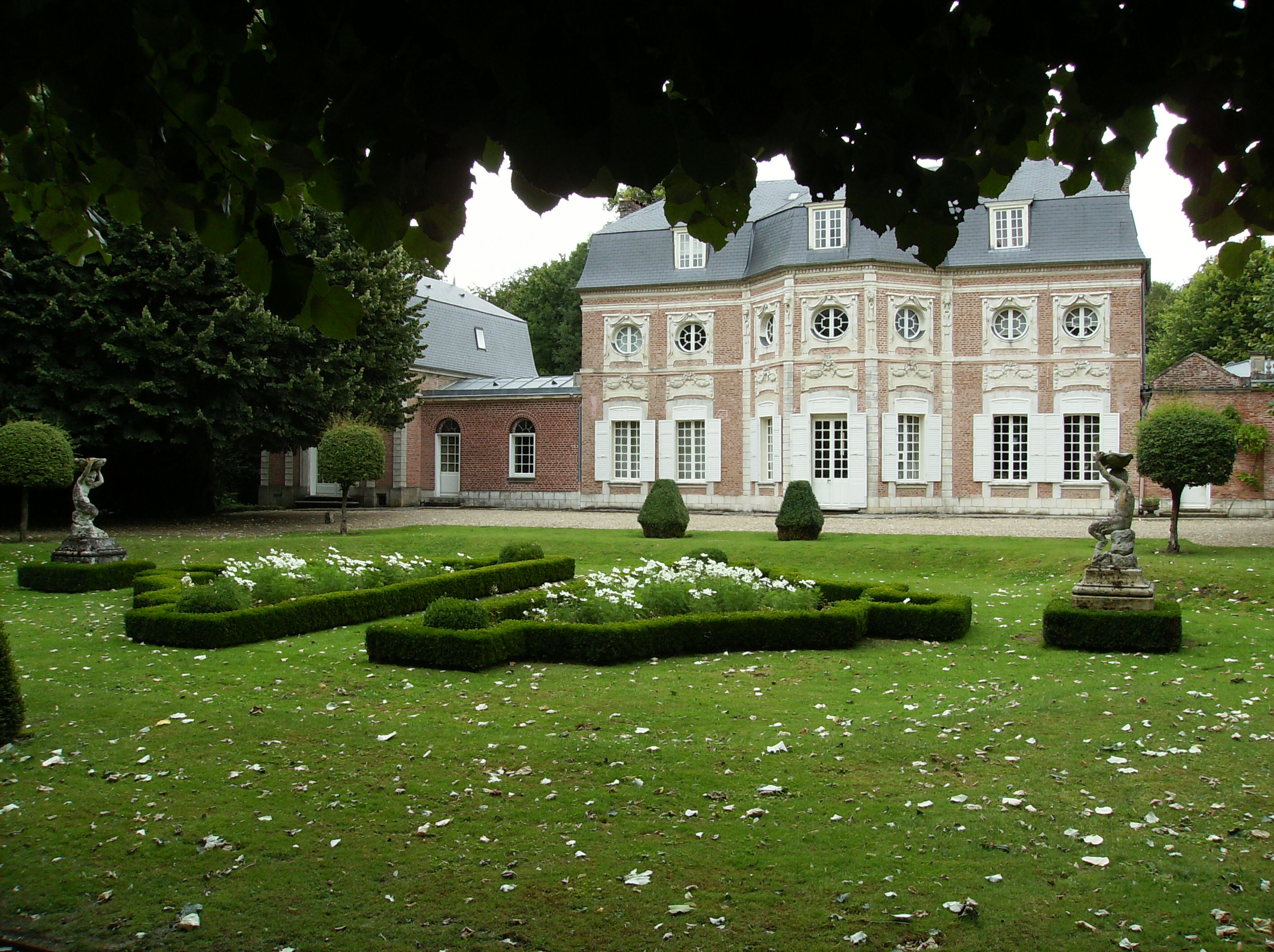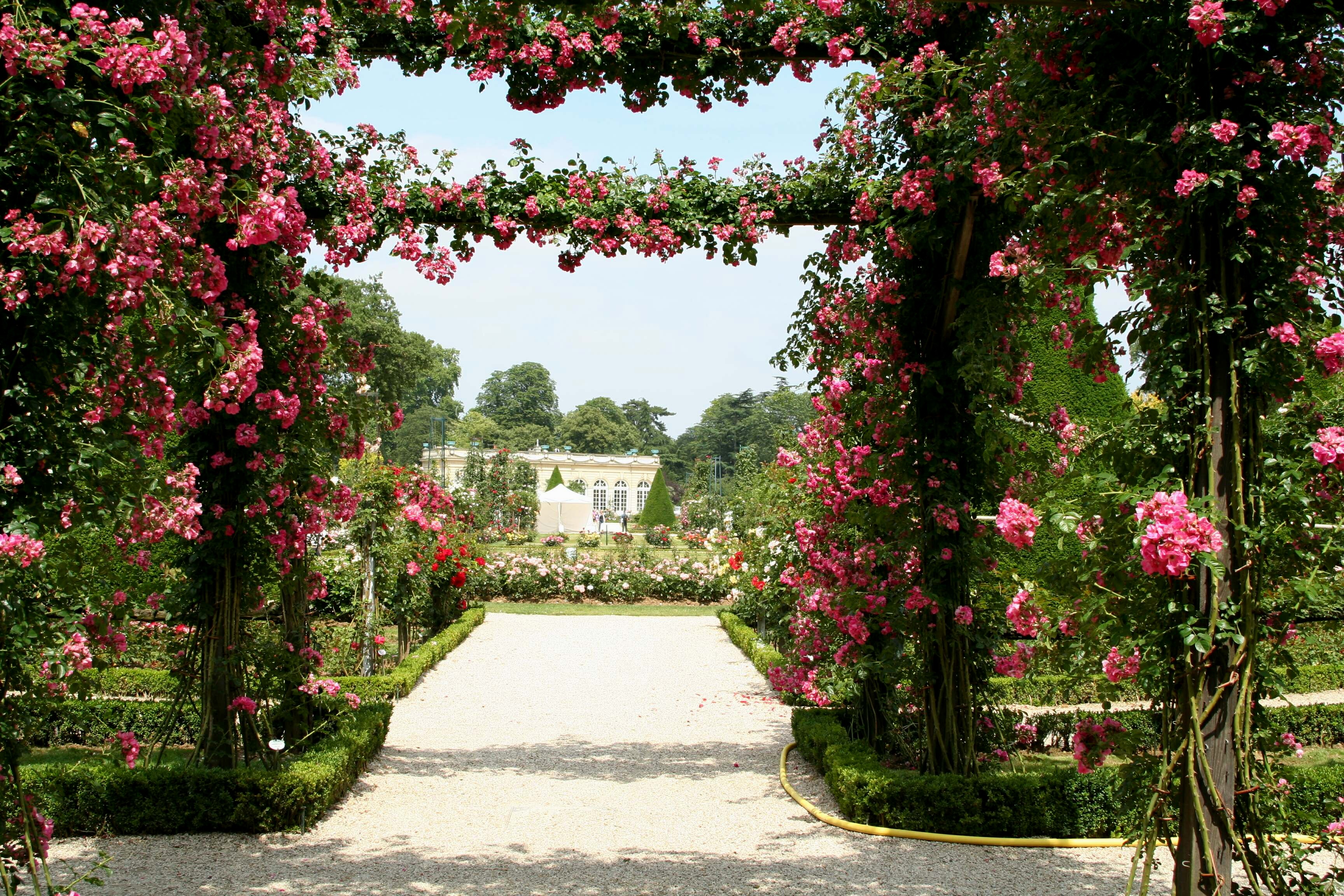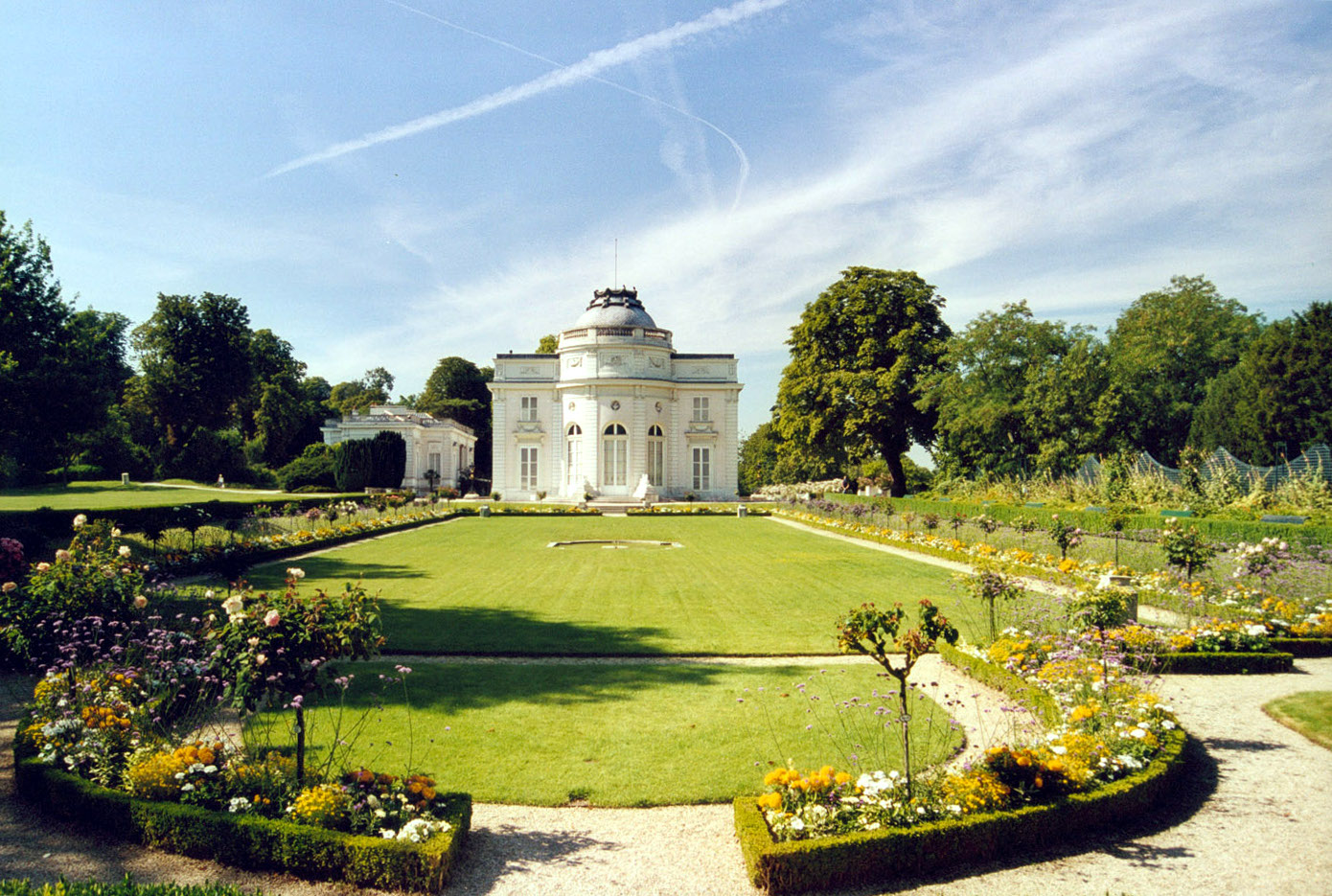Château de Bagatelle, Paris. (Source)
Built in 1720, Château de Bagatelle was originally a mere three-room hunting lodge. The Château had neither kitchen nor bedroom and only a flat terrace roof. It can now be found among the enchanted gardens of Bois de Boulonge, Paris. As it was the only building not destroyed in World War II, it is the only remaining château in the gardens. Despite the damage done to the roof, it has been renovated since then. It stands today as a charming 18th-century château in the northwestern part of the Bois de Boulogne gardens. From the renovation, and work that has been done on the Château over the years, the dining room, winter living-room, as well as the library and music room can be visited.
Château de Bagatelle, Paris. (Source)
Château de Bagatelle is known for the exquisite gardens which encompass the property. The 'Parc de Bagatelle' is laid out in the Anglo-Chinese style and was designed by Thomas Blaikie. What can be found in this Anglo-Chinese inspired style ranges from waterfalls, to Pagodas, and paths framed by rosebushes and linden trees. Surrounding the peaceful lake of the 'Parc de Bagatelle', there are orchards and hidden groves - adding beauty and mystique to the elegant Château. A multitude of French Festivals. Concerts, exhibitions and cultural events are held in the fifty-nine acre Bagatelle gardens and castle annually. Most notable is the the Festival de Chopin à Paris, which was established in 1983, and is held each June and July at the Orangerie de Bagatelle. Voltaire, Saint Säens, Sedaine, Perronneau and Mrs de La Platière were some of the most famous guests at the Château de Bagatelle.
Château de Bagatelle, Paris. (Source)
Not very much can be said about the original exterior design as is has been changed many times during renovation and redecorating since the 18th century. However, what is known about the original Château has been very articulately described by writer, Andrew Ayers;
In Jeannine Bergeron's blog on the architecture, decor and gardens of Paris she discusses her personal experience at the the Château. Bergeron describes it as "a neoclassic architectural jewel...remind(s) me of (a) music box...perfectly square, sweet, feminine and filled with treasures. The interior of the Bagatelle is well-preserved and beautifully outfitted with 18th and 19th century furniture, porcelain, and drawings. The décor is in soft shades of celadon, blue, pink and gray. Straight lines and pastel colors marked the beginning of the neoclassic period in France.
Un Paon de Bagatelle (Source)
One of the most notable things about the Chateau is the amazing trompe l’oeil painting. Blue skies, billowing clouds, and cherubs painted by famous artist Hubert Robert create a light and cheerful space. The trompe l’oeil coffered ceiling in the music room is remarkable.
The dining room was fully furnished and beautiful as well. The table was laid with Sevres porcelain, 19th century crystal, and silver candelabra. A walnut rafraichissoir sat in the corner. These little tables were popular in the 19th century, as they were used to hold wine needed to refresh beverages during a meal."
Château de Bagatelle, Paris. (Source)





